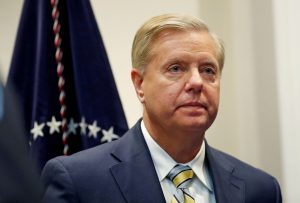
By Richard Cowan
WASHINGTON (Reuters) – On the 19th day of a partial U.S. government shutdown, Democrats were set on Wednesday to test Republicans’ resolve in backing President Donald Trump’s drive to build a wall on the border with Mexico, which has sparked an impasse over agency funding.
House of Representatives Speaker Nancy Pelosi and her fellow Democrats, who took control of the chamber last week, plan to advance a bill to immediately reopen the Treasury Department, the Securities and Exchange Commission and several other agencies that have been partially shut down since Dec. 22.
Democrats are eager to force Republicans to choose between funding the Treasury’s Internal Revenue Service – at a time when it should be gearing up to issue tax refunds to millions of Americans – and voting to keep it partially shuttered.
In a countermove, the Trump administration said on Tuesday that even without a new shot of funding, the IRS would somehow make sure those refund checks get sent.
White House spokeswoman Sarah Sanders told Fox News on Wednesday that Trump was still considering a declaration of a national emergency to circumvent Congress and redirect government funds toward the wall.
The Republican president’s push for a massive barrier on the border has dominated the Washington debate and sparked a political blame game as both Trump and Democrats remain dug in.
In a nationally televised address on Tuesday night, Trump asked: “How much more American blood must be shed before Congress does its job?” referring to murders he said were committed by illegal immigrants.
Senate Republican leader Mitch McConnell opened the Senate on Wednesday with an attack on Democrats for not supporting Trump’s demand for $5.7 billion for the wall.
But Senate Democratic leader Chuck Schumer said Trump’s speech was a rehash of spurious arguments and misleading statistics.
“The president continues to fearmonger and he makes up the facts,” Schumer said.
DEMOCRATIC TACTICS
Later in the week, Pelosi plans to force votes that one-by-one provide the money to operate departments ranging from Homeland Security and Justice to State, Agriculture, Commerce and Labor.
By using a Democratic majority to ram those bills through the House, Pelosi is hoping enough Senate Republicans back her up and abandon Trump’s wall gambit.
The political maneuvering comes amid a rising public backlash over the suspension of some government activities that has resulted in the layoffs of hundreds of thousands of federal workers.
Other “essential” employees are being required to report to work, but without pay for the time being.
As House Democrats plow ahead, Trump and Vice President Mike Pence will go to Capitol Hill on Wednesday to attend a weekly closed lunch meeting of Senate Republicans.
They are expected to urge them to hold firm on his wall demands, even as some are publicly warning their patience is wearing thin.
Later in the day, Trump is scheduled to host bipartisan congressional leaders to see if they can break the deadlock. On Thursday, Trump travels to the border to highlight an immigration “crisis” that his base of conservative supporters wants him to address.
With tempers running high over Trump’s demand for $5.7 billion just for this year to fund wall construction, there are doubts Pelosi’s plan will succeed in forcing the Senate to act.
McConnell has not budged from his hard line of refusing to bring up any government funding bill that does not have Trump’s backing even as a few moderate members of his caucus have called for an end to the standoff.
The funding fight stems from Congress’ inability to complete work by a Sept. 30, 2018, deadline on funding all government agencies. It did, however, appropriate money for about 75 percent of the government by that deadline – mainly military and health-related programs.
(Reporting by Richard Cowan; Additional reporting by Amanda Becker and Susan Heavey; Editing by Bill Trott and Alistair Bell)









